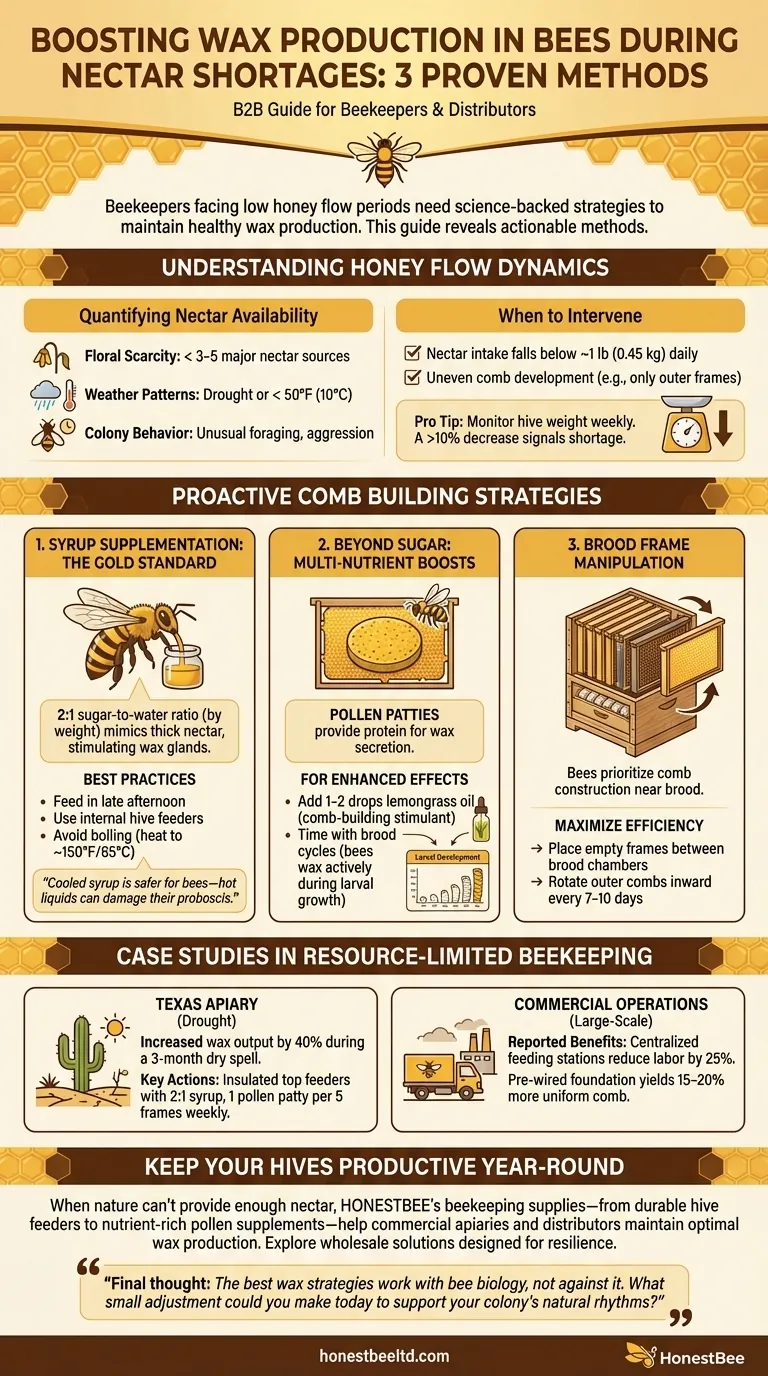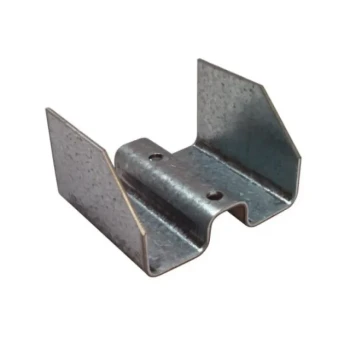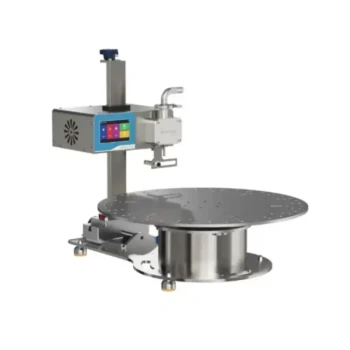꿀 생산량이 적은 시기를 겪는 양봉가는 건강한 밀랍 생산을 유지하기 위한 과학 기반 전략이 필요합니다. 이 가이드에서는 자연적인 꿀이 부족할 때도 벌집을 효율적으로 짓도록 돕는 최적화된 시럽 보충부터 애벌레 관리까지 실행 가능한 방법들을 소개합니다.
꿀 흐름 역학 이해
벌은 꿀이 풍부한 시기, 즉 꿀 흐름이 강할 때 밀랍을 가장 많이 생산합니다. 그러나 가뭄이나 극한의 온도와 같은 환경 스트레스 요인은 이러한 자연적인 주기를 방해할 수 있습니다.
꿀 가용성 정량화
낮은 꿀 흐름의 주요 지표:
- 꽃 부족: 개화 중인 주요 꿀 공급원이 3~5개 미만
- 날씨 패턴: 장기간의 건조 또는 50°F(10°C) 미만의 온도
- 군집 행동: 평소보다 일찍/늦게 먹이를 찾거나 먹이통 근처에서 공격성을 보임
개입 시기
자연적인 밀랍 생산은 다음과 같은 경우 느려집니다.
✔ 꿀 섭취량이 하루 약 1파운드(0.45kg) 미만으로 떨어질 때
✔ 벌집에 불균일한 벌집 발달이 보일 때 (예: 바깥쪽 프레임만 채워짐)
전문가 팁: 매주 벌집 무게를 모니터링하세요. 10% 이상 감소하면 꿀 부족을 의미합니다.
사전 예방적 벌집 건축 전략
1. 시럽 보충: 표준 금
연구에 따르면 설탕과 물의 비율이 2:1(무게 기준)인 시럽은 진한 꿀을 모방하여 밀랍샘을 가장 효과적으로 자극합니다.
모범 사례:
- 도둑질을 줄이기 위해 늦은 오후에 먹이를 주세요
- 내부 벌집 먹이통 사용 (열린 용기 사용 금지)
- 시럽 끓이지 않기 — 설탕을 녹일 만큼만 물을 데우세요 (약 150°F/65°C)
"식힌 시럽은 벌에게 더 안전합니다. 뜨거운 액체는 벌의 구기(proboscis)를 손상시킬 수 있습니다."
2. 설탕 그 이상: 다중 영양소 강화
화분 반죽(애벌레 둥지 위에 놓음)은 밀랍 분비를 위한 단백질을 제공합니다. 효과를 높이려면:
- 레몬그라스 오일 1~2방울 추가 (천연 벌집 건축 촉진제)
- 애벌레 주기와 맞춰 반죽 배치 — 벌은 유충 성장 단계에서 가장 활발하게 밀랍을 생산합니다
3. 애벌레 프레임 조작
벌은 애벌레 근처에서 벌집 건축을 우선시합니다. 효율성을 극대화하려면:
→ 애벌레 방 사이에 빈 프레임을 놓으세요 (대칭적인 건축을 장려함)
→ 7~10일마다 바깥쪽 벌집을 안쪽으로 회전시키세요
자원 제한 양봉 사례 연구
가뭄 지역에서의 성공
텍사스의 한 양봉장은 3개월간의 건조 기간 동안 다음과 같은 방법으로 밀랍 생산량을 40% 늘렸습니다:
- 2:1 시럽이 담긴 단열 상단 먹이통 사용
- 매주 5개 프레임당 1개의 화분 반죽 추가
대규모 운영 교훈
상업적 운영 보고에 따르면:
📌 중앙 집중식 급이 스테이션은 개별 벌집 먹이통에 비해 노동력을 25% 절감합니다.
📌 사전 와이어링된 기초는 스타터 스트립보다 15~20% 더 균일한 벌집을 생산합니다.
연중 벌집 생산성 유지
자연이 충분한 꿀을 제공할 수 없을 때, HONESTBEE의 양봉 용품—튼튼한 벌집 먹이통부터 영양가 풍부한 화분 보충제까지—는 상업 양봉장과 유통업체가 최적의 밀랍 생산을 유지하도록 돕습니다. 대량 도매 솔루션을 탐색하세요.
마지막 생각: 최고의 밀랍 전략은 벌의 생물학과 함께 작동하며, 반대되지 않습니다. 오늘 당신의 군집의 자연스러운 리듬을 지원하기 위해 어떤 작은 조정을 할 수 있을까요?
시각적 가이드

관련 제품
- 접이식 중국 여왕 사육 도구 장비
- 탱크가 있는 스테인리스 스틸 허니 프레스 왁스 프레스
- 번식 여왕벌 양봉용 브라운 니코트 여왕벌 셀 컵
- 양봉용 안전 잠금 버클이 있는 전문가용 아연도금 벌통 스트랩
- 양봉용 트레이가 있는 전기 평탄화 및 엠보싱 기계




















